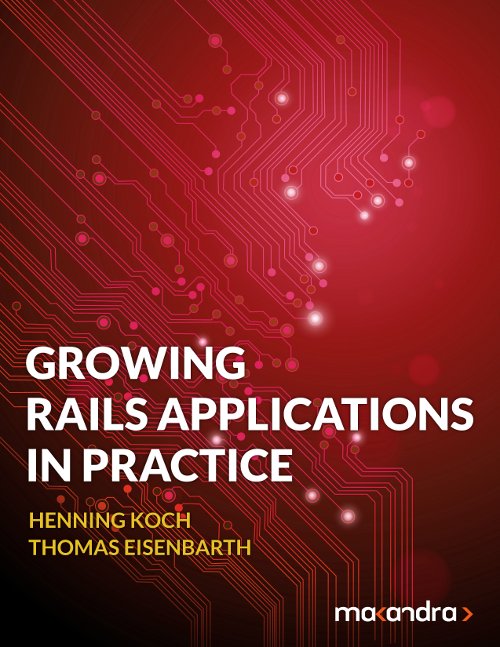First off: You might have noticed that the name of this site has changed from Gem Session to simply makandra blog. It's still us, makandra. Please don't unsubscribe.
You might also have noticed that the last post before this one is from 2011. That's three years ago. Yes, we're still alive. Yes, we're still doing Ruby on Rails. We've just been super busy.
1. We've become a supplier for the Ruby industry
I'm not sure if there even was a Ruby industry a few years ago, but by now Ruby and Rails has become a huge technology sector. We now see massive Rails projects facing serious challenges of scale and security. We have moved on from being a pure Ruby consultancy to supporting owners of commercial Rails projects.
When official support for Ruby on Rails 2.3 and 3.0 ended with the release of Rails 4, we picked up the torch with Rails LTS. We now continue to provide security patches for Rails 2.3 and 3.0, protecting existing applications or providing project owners with more time for upgrading.
As a companion service we launched Ruby Backports. By backporting a gem you can use modern libraries without having to upgrade your Rails or Ruby. Or you might want to port a security patch to a version branch that is no longer maintained by the community.
By offering services like Rails LTS and Ruby Backports we hope to bring some calm into an ecosystem that traditionally had issues with API stability.
2. We're writing a book about growing Rails projects
OK, everyone's writing a book. But ours is special. Super-promise.
How to make large Rails applications not fall apart is the number one challenge Rails teams all over the globe are facing right now. There are a number of approaches like SOA, DCI or embedded engines, which all come with their benefits and drawbacks. What's missing is a good default for the average Rails team: What low-ceremony measures can you take to keep a Rails application maintainable as it grows into its second or third year of development?
By taking a dozen Rails applications from inception to deployment each year, we had the unique opportunity to experiment with different architectural patterns. Since we often maintain these projects for years afterwards, we have a pretty good idea which techniques tend to work out and which don't.
By distilling our experiences into a single book we want to show you one path to create a Rails app that is a joy to understand and change, even as your team and code base grows. We won't talk about revolutionary design patterns, hip techniques, or awesome gems that automagically solve all your problems. Instead we will show how to use discipline, consistency and organization to make your application grow more gently.
We're currently finishing up the final chapters. Growing Rails Applications in Practice will be released this summer. If you're interested in the book, please enter your e-mail address into our notification form. We will let you know as soon as we publish!
3. We've been blogging elsewhere
Remember when we told we how we open-sourced our internal knowledge base and built makandropedia? When we did this in 2010 we had about 200 HOWTOs for Ruby, Rails, RSpec, Cucumber and Javascript. Since then we've been blogging there. A lot. Today makandropedia contains over 3000 cards. We liked it so much that we sort of forgot about this blog.
We will continue to post technical guides and HOWTOs to makandropedia, so if you're following us for that, you should subscribe to makandropedia's feed. We will use this blog for rants and commentary about software craftsmanship, technology and the world of Ruby and Rails in particular.
4. We've just been busy
When we entered our third year as a company in 2011, we experienced some growing pains that are the last thing on your mind when you launch a startup. Despite this transition and all the product development we launched so many Rails projects in those years that we're having a hard time remembering them all.
We're sorry for falling off the grid. We're sorry we didn't call. But sometimes you just need to sit down and get shit done.
Expect more posts on this blog soon. Make sure you subscribe to our feed. If you're not into feed readers you can also follow us as @makandra_de on Twitter or on Facebook. We will re-post links to new blog articles on both networks.

